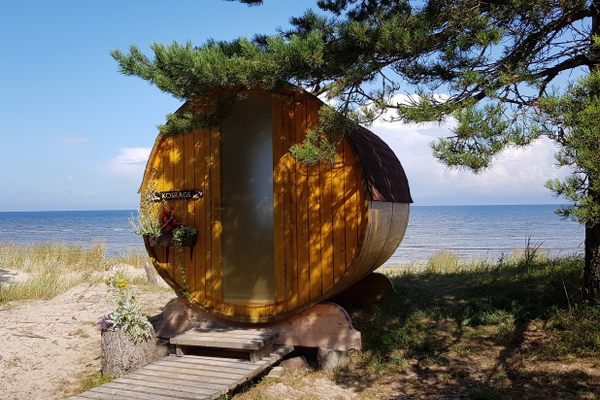AO Edited
Manitoga
This sprawling woodland estate was the brainchild of iconic American industrial designer Russel Wright.
Tucked away in the Hudson Valley, Manitoga is the 75-acre woodland estate where American industrial designer Russel Wright built his home and studio from scratch. This National Historic Landmark was built over the span of 11 years and finally completed in 1961, and is where the designer ended up spending the rest of his life.
In 1942, Wright and his wife, Mary, purchased the property, which was essentially an abandoned, untouched rock quarry. The couple was widely regarded as two champions of thoughtful design, and Mary is credited as being the marketing genius behind her husband’s wildly successful Modernist houseware items (which were notably stamped with his signature). Famous for his tableware and furniture designs, Wright’s concept of easy and informal living revolutionized the American home in the mid-20th century.
The designer was born into a Quaker family in Lebanon, Ohio, and Manitoga’s soothing atmosphere celebrates that upbringing. Wright was also heavily influenced by his trips to Japan, which reveals itself in the clean lines of the house and studio, and the emphasis on the natural world as being connected to the human-made structures. A cedar tree trunk, which serves as the house’s structural support, takes center stage (interestingly, Wright’s career began in theater design). Also, boulders and various plants from the surrounding landscape bleed into the walls of the home, aided by the massive glass windows that line the perimeter.
Wright designed almost every element inside his home and home studio, from the light fixtures, to the uncut stone steps, to the dinner table and chairs. Unsurprisingly, most things have elements of nature in them, like pressed flowers between plexiglass that serve as a sliding door for a bathroom. Architect David Leavitt assisted Wright with the realization of “Dragon Rock;” the name given by the Wright’s daughter to the home, studio, and surrounding quarry landscape. (As a child, she thought the rock that runs alongside the swimming pond Wright created looked like a dragon taking a sip.) An early champion of sustainability and green living, Wright also designed moss gardens on top of the house’s roof.
Though Wright died decades ago, “Manitoga,” Algonquin for “place of great spirit,” lives on, and Wright’s attention to detail is impossible to miss. Today, this design center hosts various events, guided hikes, and tours, and offers artist residencies.
Know Before You Go
Tours are offered seasonally, from May to November. Buying tickets in advance is encouraged. The estate is a roughly five-minute drive from the Garrison Metro-North station. Wearing comfortable shoes to mildly hike around the home and woodland garden is advised.





















Follow us on Twitter to get the latest on the world's hidden wonders.
Like us on Facebook to get the latest on the world's hidden wonders.
Follow us on Twitter Like us on Facebook